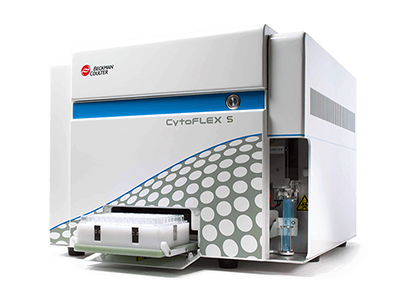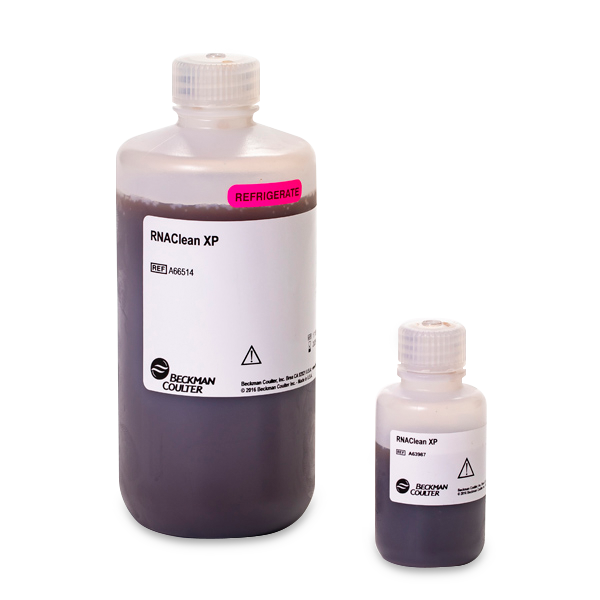Extracellular Vesicles Workflow
Extracellular vesicles (EVs) are secreted by almost every cell type. EVs are a diverse group of nanoparticles, produced by blebbing from the cell membrane or exported by the Golgi complex. EVs are thought to be important for cell-cell signaling and cell cycle regulation. They have been demonstrated to have a wide range of sizes, display unique surface peptides and carry a diverse set of payloads. Isolating and analyzing EVs without compromising vesicle morphology or integrity is a challenge, and there isn’t a standardized procedure. There are currently many ways to approach isolating and characterizing EVs.
Extracellular vesicles are an exciting area for therapeutic research and development. EVs secreted by cells in culture may contain bioactive compounds that benefit patients. Isolating pure EVs from cell cultures can be a challenge, because EVs are too large to be sterile filtered. Workflows must finely separate EVs from other biological materials without heavily biasing a sample or compromising the integrity of the EVs. Purifications must be precise in order to obtain a desired EV subspecies.
Cell culture
Grow cells in a continuous culture for a consistent supply of extracellular vesicles. EVs are secreted into media by cultured cells. Volumes of culture media can simply be drawn off and nanoparticles separated from coarse debris. Excellent aseptic technique and a clean environment is required when maintaining cultures. Mitigate risks of contamination by automating liquid handling, cell viability, counting and media health measurements.
Separation
Separating EVs from large particles is an important first step toward your product. Since cleanliness is an utmost concern in this workflow, this step is extremely important for removing particles, cells, and contaminants. Flexibility and cost benefits are key. Off-the-shelf or turnkey solutions for purifications can be very expensive in the long run. Per-run cost for a centrifuge is much less than repeatedly buying a kit.
Centrifuge-based workflows can be optimized for a specific EV type or workflow goal. The ability to swap a rotor, change gradient composition and vary speeds or spin times depending on purification needs adds flexibility and value.
Clarification / Purification
Once media has been through an initial separation, EVs can be purified from the rest of the supernatant. The ability to finely separate particles by size and density on a gradient using a centrifuge is valuable. Depending on gradient composition, one can select for vesicles of a certain size range, or choose to isolate a single size species.
Using a density gradient centrifugation or differential ultracentrifugation method is open-ended and allows for tweaking based on research aims and responses to results. EV purifications with a centrifuge serve as a canvas to optimize with.
Analytical Characterization
Once vesicles are purified, investigations into their payload, morphology and surface-bound biomarkers can begin. This could be with the goal of finding ideal candidates for drug development, understanding transcriptomic signatures of mRNA or miRNA cargo or studying antigens on the exterior of EVs secreted by a unique cell line.
We offer several solutions for vesicle analysis, flow cytometric analyses and RNA extraction and preparation reagents:
Flow cytometry gives many insights into extracellular vesicle samples. Nanoscale flow cytometry can reveal antigens or proteins that may be carried on the exterior of vesicles, as well as size distributions of vesicles in a sample or the abundance of a single species in a sample. We offer flow cytometers that can detect particles down to 80 nm,1 making flow cytometry of nanoparticles easy and readily available. Like centrifugation, flow cytometry is an open-ended tool. Flow cytometry requires only a simple training and dilution series to start gathering data, making it an easy and effective analytical method.
Vesicle payload is another important area of research. Because of their known role in cell-cell communication and as parent cell transcriptome indicators, RNA analyses of EV cargoes can give valuable information. RNA extraction, cDNA size selection and cDNA cleanup reagent kits allow for tight control over your analyses and are recommended for downstream sequencing chemistries2,3. Minimize preparation time and extract RNA, size select, and turn around to prepare samples for sequencing chemistry in a streamlined workflow.
Conclusion
- Extracellular vesicles are secreted by all cells and carry diverse RNAs and proteins. They are being researched as potential therapeutics or indicators.
- EVs can be purified from cell culture media. The EV isolation workflow must be performed in a sterile environment. Automation of culture maintenance can help.
- Separate small particles from large culture debris with a small per-run cost using a centrifuge.
- Use differential ultracentrifugation or density gradient centrifugation to finely purify EVs. These techniques can be tweaked and customized.
- Analytically characterize EVs to understand surface antigens or RNA payload. Sensitive and precise instruments are required to gather data on these nanoparticles.




